This was published 6 years ago
Most beautiful places on earth: Seven paradises that are heaven on Earth
By Traveller
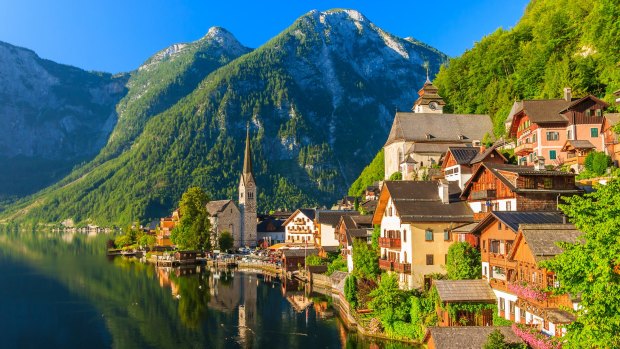
Too pretty to be read ... Hallstatt mountain village, Austria.Credit: Shutterstock
The most threadbare word in travel would surely be "paradise". But what exactly do people mean when they over-use this descriptor? The simplest manifestation of a traveller's nirvana is a magnificent location. But one person's notion of beauty is another's monochrome.
Deserts or big-sky plains could be heaven to some, alarmingly unstructured to others. Mountains and forests are one person's spiritual home, another's claustrophobia. Thickly peopled cities, with their weight of history and culture, are the essence of civilisation or its betrayal. Even the ocean and its salty associations, though commonly accepted as the apotheosis of paradise, has its critics.
Paradise is more a state of mind – not simply a beautiful place but an emotional condition, a spiritual epiphany, a sense of serendipity or accident of fate where perfection collides – or all of the above. Paradise is highly personal, because it's where you feel happiest.
At its most complex, it could be a yearning for something unique, pure and mystical, for perfection in a flawed world. It might relate to our happy childhood places. It could be a counter to the lives we lead – serene or frenetic.
Seven of our writers have thought about the many destinations they've visited and chosen their "paradise found". We have three wild places, a village high on a mountain lake, two islands and, interestingly, only one city, perhaps reflecting our first-world perspective.
GALAPAGOS ISLANDS, ECUADOR
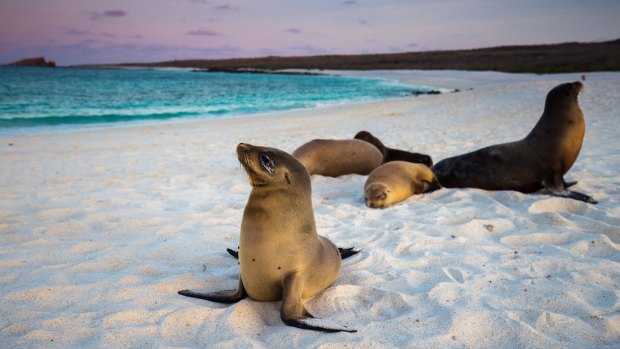
Credit: Shutterstock
By Kerry van der Jagt
It is first light when we put ashore at Isla Bartolomé, our boots crunching on volcanic rocks as we step across the heaving bow of our Zodiac. A few metres in, a fluted peak rears behind the ocean, dappled with orange spatter cones and sooty lava flows. A lunar landscape born of fire, it is as fierce as it is fragile. Reaching the summit we look down on a perfect arc of beach, a spearheaded obelisk known as Pinnacle Rock anchoring its furthermost point. From our lofty position the beach below is a sash of gold, a painter's stroke separating turquoise water from singed land.
The Galapagos Islands, a remote archipelago of 13 volcanic islands straddling the equator, is not your typical island paradise. It's more than that. It's a place where cormorants have forgotten how to fly and iguanas have learned to swim; where the ocean floor is speckled with choc-chip starfish and boobies in red boots hang on branches like Christmas baubles. It's a place where half the animal species that call it home are found nowhere else, and most don't give a toss that you are here.
I'm travelling with Lindblad Expeditions aboard the 96-passenger National Geographic Endeavour II, a 10-day expedition that will bring us close to natural wonders that most people can only dream about. We've already visited Espanola Island, created more than 3.5 million years ago and one of the oldest in the archipelago. Here, we witnessed the courting dance of blue-footed boobies, were sneezed on by snotty marine iguanas, and watched in awe as waved albatross landed from the heavens on an "albatross airport".
On Floreana Island we wade ashore on a green sand beach, spot lipstick pink flamingos and snorkel over coral gardens. Afterwards, we flop on the warm sand alongside sleeping sea lions an later, as the sky blushes pink, we kayak amid pairs of loved-up sea turtles.
What else is there to do in paradise?
Snorkelling around the base of Pinnacle Rock with penguins (yes, penguins), I feel like I've slipped through a fissure that has brought me to another dimension. Even Darwin was compelled to write, "whilst this planet has gone cycling on according to the fixed law of gravity, from so simple a beginning endless forms most beautiful and wonderful have been, and are being, evolved."
If this isn't paradise, I don't know what is.
MAKE IT HAPPEN
WHEN Year round, but breeding seasons vary depending on species.
FLY LATAM Airlines now operates three non-stop flights per week from Melbourne to Santiago, Chile, with onward connections to Ecuador's Galapagos Islands. LATAM also offers daily flights from Sydney to Santiago, via Auckland, with onward connections to more than 124 destinations, including the Galapagos Islands. See latam.com
DO Passengers can explore the islands by foot, kayak, paddleboard or glass-bottom boat with plenty of time for swimming, snorkelling or diving (selected sites). Photography is also a prime pursuit.
CRUISE Lindblad Expeditions operates 10-day voyages year-round with weekly departures. Fares start from A$8700. See www.expeditions.com
ESSENTIALS The Galapagos is a UNESCO World Heritage Site and 97 per cent is protected as a national park – Parque Nacional Galapagos. See galapagos.gob.ec
HALLSTATT, AUSTRIA
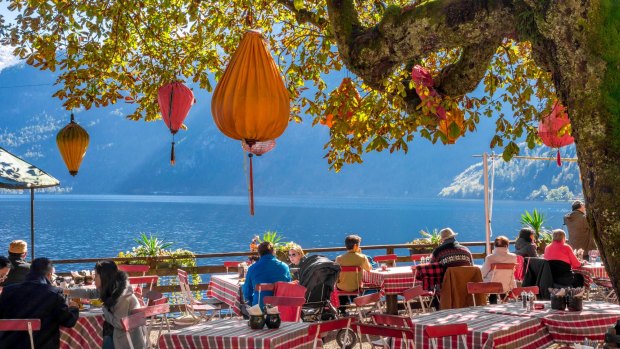
Credit: Alamy
By Brian Johnston
For me, mountains come close to paradise, and I don't think I'm alone. Since forever, humans – wandering Japanese monks, ancient Greeks, Hindu holy men – have looked to the hills for inspiration, spiritual enlightenment and escape. Then Romantic writers "discovered" the beauty of the formerly terrifying mountains for Europeans in the 18th century, drumming up images of happy goatherds and freedom fighters. Mountains became the subject of poetry and painting, and soon alpine tourism was born. Mountains make my soul sing wherever I might be, but I especially like the contrast of rugged nature and dainty human endeavour you find in the European Alps. Surely paradise must look like this: majestic, muscular peaks coupled with pretty gardens, gingerbread houses and vivid flowerboxes in a yin-yang of scenery.
No place better captures this than Hallstatt in Austria's alpine Salzburgerland, where rearing mountains are pockmarked with lakes of gob-smacking gorgeousness. It provides a scene as ridiculously kitschy as any on a chocolate box. The village sits on the edge of a lake paddled by swans and surrounded by limestone cliffs. The water is so clear you can see fish flit. If I ever get to heaven, it had better look like this.
There's always a fly in the ointment of travel destinations claimed as paradise: tropical diseases, ugly hotels, surly locals, a lack of plumbing. Not in Hallstatt though. Hotels are comfy cosy, cheerful locals flounce about in dirndls, and the only thing you might die of is a surfeit of scenery. Even dead people here look beautiful. They have their skulls painted with roses and gentians and stacked in a charnel house beside the 800-year-old chapel, which has a splendid lake view. Pastel houses tumble down to blue water cross-hatched by boat wakes. Church bells clang. Meadows are an Impressionist splash of yellow buttercups.
Whenever I'm in the mountains, my spirit soars. I turn to them in times of trouble, because worries seem trivial in the face of their eternal rocks. The mountains will be here long after my problems have gone, and I've gone, too. I find this geological perspective liberating. Mountains are for sunny tramps beneath silent snow peaks, hissing waterfalls and pine-scented forest. They provide intervals of beauty and solitude snatched from a crowded, accelerated life of busyness. Travel is supposed to make you feel better, and mountains are my piece of paradise.
MAKE IT HAPPEN
WHEN May to September, though chillier April and November actually have the lowest rainfall.
FLY Etihad flies to Abu Dhabi (14.5 hours) and Munich (six hours and 30 minutes), a scenic three-hour drive from Hallstatt. Phone 1300 532 215, see etihad.com
DO Take a tour through the salt mines at Salzwelten Hallstatt (salzwelten.at) and hike panoramic alpine trails towards Bad Goisern. Hallstatt Skywalk (hallstatt.net) has magnificent views.
STAY Heritage Hotel Hallstatt links three historic houses with considerable flair. No two rooms are the same; many have lake views. Phone +43 6134 20036, see hotel-hallstatt.com
ESSENTIALS Hallstatt is just over an hour's drive southeast of Salzburg. See austria.info/au
ANTARCTICA
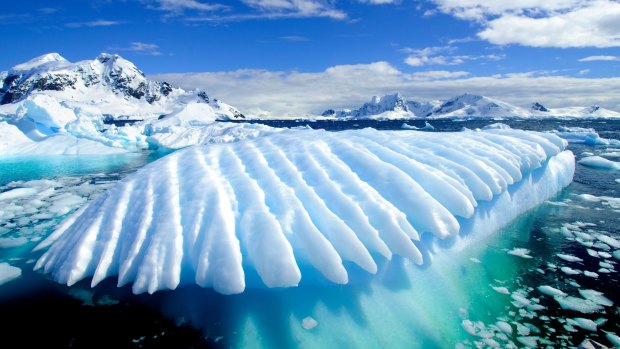
Credit: Alamy
By Nina Karnikowski
The world's largest frozen desert, the loneliest and coldest place on Earth that's the most hostile to living beings, may not immediately spring to mind when you hear the word "paradise". But if you, like me, consider paradise to be more about peace and purity than piña coladas, mental clarity than water clarity, and rediscovering your sense of wonder for the planet than rediscovering your suntan, then Antarctica must, indeed, be the place.
For the past 59 years, since the Antarctic Treaty was first signed by 12 countries including Australia, the entire continent has been dedicated to peace and science. With today's threats of climate change and global conflict, it seems almost miraculous that the treaty has not only survived this long, but continues to gather new signatures, ensuring Antarctica remains the most pristine corner of the earth.
Because this peaceful continent (which is roughly twice the size of Australia) has a maximum population of about 4000 people during the summer months, it's one of the last places on earth where you can see things left just as they are, with barely any interference from humans. Standing on the icy shores of Neko Harbour, curious baby penguins waddling through the snow by your feet as you gaze out at icebergs the size of skyscrapers, will leave you feeling that there may be hope for our planet after all.
This feeling will arise again and again in Antarctica. As your Zodiac whizzes past plump white crabeater seals waving from the tops of icebergs. As whales flash their tails from the icy depths while you watch from your luxurious ship's deck, champagne in hand. As you slide past the soaring white crags of the Lemaire Channel, so picturesque it has been nicknamed Kodak Alley, and you suck in another lungful of pure, frosty air. It's beauty you can be awed by, a place of true majesty that also has the power to drag you completely and utterly into the present moment. Perched on top of some snow-capped hill, surrounded by nothing but ice and snow and perfect silence, you'll feel you're the last person left alive on Earth. Which, really, is the truest form of escape.
Put simply, Antarctica restores your sense of wonder for the world. And what could be more paradisiacal than that? There may not be balmy beaches. There may not, for the unlucky, even be sunshine. But this frozen edge of the world is, for me at least, heaven on earth.
MAKE IT HAPPEN
WHEN Summer; October to March
FLY Air New Zealand flies daily from Sydney and Melbourne to Buenos Aires via Auckland. From there it's a three-and-a-half-hour flight to Ushuaia, where most ships leave for the continent. See airnewzealand.com.au
DO Highlights of a trip to the Antarctic Peninsula include penguin haven Neko Harbour, the picturesque scientific base of Port Lockroy and the active, fur seal-strewn volcano that is Deception Island.
STAY Cruise ship, icebreaker or yacht: it's up to you.
ESSENTIALS APT's 15-day Classic Antarctica tour starts from $16,490 per person. See aptouring.com.au.
MANA POOLS, ZIMBABWE
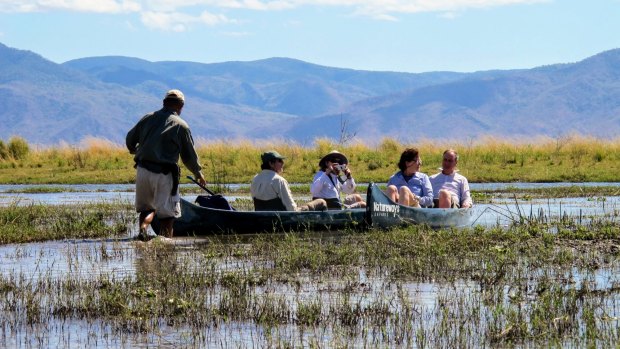
By Alison Stewart
This is where I chanced upon paradise, or near enough: languishing 15 degrees south of the Equator within an ancient rift valley is the 2000-square-metre Mana Pools National Park on the Zambezi River, game rich beyond belief, one of Africa's last pristine wilderness areas.
It is about as far away as you can get from Sydney, my home, which only occasionally yields glimpses of a touchingly imperfect paradise, found mostly in its diversity, history and vibrant surge of people, loved ones and friends.
But travel is often about seeking something different, and because we travel on a finite journey, it also means a perpetual quest for perfection.
We think we find it, yet tell ourselves there's something better up ahead. The trick would be to find it more often within. But in the absence of that, here it is spread before me on the Mana Pools flood plain.
This primeval place is where you can examine your own limitations – its raucous beauty and savagery renders individual cares insignificant. Paradise is in the chugging cacophony of hippo, wailing hyena, soft elephant snuffles and eerie sound of lion outside your tent, the giant Nile crocodiles, the up-close breath of danger. In its simplest form, it is life, death and magnificence – a cleansing of the soul.
In the June-to-October dry season, the great predators and herbivores descend from the woodlands of the Great Rift Valley's escarpment to the mopane thickets and rich alluvial riverine terraces, shallow pools and flood plains of World Heritage-listed Mana Pools, meaning "four pools" in Shona.
These are the perennial pools or oxbow lakes, remnants of the old riverbed that run parallel to the river's main channel. As waterholes and streams evaporate, tropical moisture yields a rich smorgasbord of sweet grasses, mopane, sausage trees, baobabs, Natal mahogany and the protein-mineral-rich pods of the winterthorn acacia tree – "the magic time of the pods".
We have come to canoe and walk on a week-long mobile camp safari that ranges 50 kilometres along the river. Across the swift-flowing Zambezi is Zambia, rising to the rift escarpment. Brilliant stars beat a short path to my mesh-top tent.
But paradise is subjective. Former president Robert Mugabe plundered Zimbabwe. In Mana Pools, we wake to the shrieking of a hippo being butchered. Our Mana Pools-born guide and son-of-a-guide tells us workers' wages go unpaid. Instead, they must cull to eat.
Hopefully, post-Mugabe Zimbabwe, more open to tourism, will re-discover its "magic time of the pods" and the paradise that is Mana Pools will no longer need any qualification.
MAKE IT HAPPEN
WHEN Dry season from June to October.
FLY Qantas flies from Sydney and Melbourne to Johannesburg. South African Airways (SAA) flies from Perth. SAA flies from Johannesburg to Harare and Victoria Falls. See qantas.com and flysaa.com.au
There are domestic charter shuttle flights from Harare (about 1.5 hours) or Victoria Falls (about 2.5 hours) into Mana Pools (see Essentials, below). Self-drive into Mana Pools is not recommended unless 4WD experienced – long distances, difficult roads.
DO Game viewing, canoeing and walking safaris, mobile and fixed camps.
STAY A choice of operators. Includes Zambezi Safari & Travel Company and Natureways for canoeing/walking safaris, Classic Safari Company, African Bush Camps, Expert Africa for camps and canoeing/walking options.
ESSENTIALS Book through an operator familiar with Zimbabwe due to a complex system of park/accommodation fees and charter/shuttle costs.
Experts include: zambezi.com natureways.com classicsafaricompany.com.au africanbushcamps.com expertafrica.com
SAVUSAVU, VANUA LEVU ISLAND FIJI
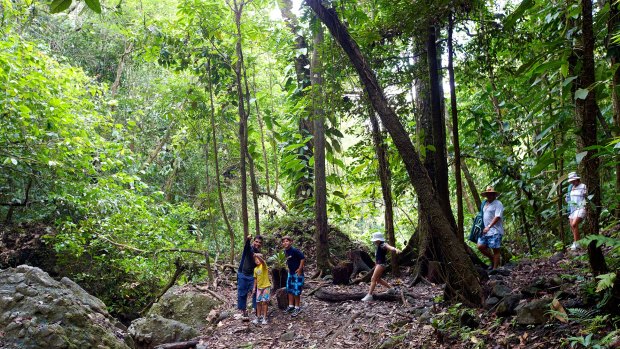
By Sheriden Rhodes
I'd been to many a tropical island by the time I first visited Vanua Levu, but there was something about it that stirred the soul. Flying over jewel shaped reefs and atolls strung out like pearls in an iridescent green sea, and finding myself off the well-worn tourist trail was special, sure; but it was more than that. It felt like coming home.
Savusavu, Vanua Levu's charming harbourside town, exudes a warmth, I'd not felt anywhere else. Known as Fiji's "Hidden Paradise", its deep harbour, spectacular reefs and secluded, palm fringed bays are aesthetically beautiful in a postcard perfect kind of way. But here the earth beneath your feet oozes an energy that instantly makes you feel calmer, walk slower, breathe easier. Time seems to slow down and, unfailingly, you lose track of it.
I first came to Savusavu in 2006 and stayed at Jean-Michel Cousteau Resort. It made such an impression on me, I decided to get married there. Twelve months later we tied the knot in a thatched bure as waves gently lapped the shore. A fiery sunset lit up the Coral Sea, hurricane lanterns glowed along the shoreline as we were serenaded by a heavenly Fijian choir. Just two hours earlier, I'd been snorkelling off the pier, spotting curious soldier fish, giant clams and dramatic looking Lion Fish. Given I was pregnant and sick 24/7, it was the ultimate stress-free wedding.
That was more than a decade ago now. Since then we've returned so many times I've lost count. We've celebrated birthdays (including our daughter's second birthday), our 10th wedding anniversary, dived with Jean-Michel Cousteau himself, and brought friends and family over with us to experience the place we love most in the world. The staff are like family. We worry about them, raise money if something's needed, bring over parcels of donations, and follow their lives with interest.
Whenever we approach the resort along the narrow road that hugs Savusavu Bay, I feel an overwhelming surge of emotion. As I step from the vehicle, the sound of the Bula welcome song greets us, along with a heady waft of frangipani and coconut. I'm pulled into warm hugs by staff, who have become friends; others give high-fives with the biggest smiles. "Welcome home," they say and I smile back and reply, "thank you", because I truly feel like I am.
MAKE IT HAPPEN
WHEN May-November for less humidity and rainfall; January-March is peak cyclone season.
FLY Fiji Airways flies daily from Sydney, Melbourne and Brisbane to Nadi (see fijiairways.com) with connecting flights with Fiji Link to Savusavu. Island Hoppers also services Savusavu (see helicopters.com.fj), or for the ultimate experience Pacific Island Seaplanes will have you land at the end of the resort's jetty. See pacificislandair.com
DO Dive the world-famous Namena Marine Reserve with Jean-Michel Cousteau Dive Centre, do sunset yoga on the resort's private island, trek through the jungle and cool off at the stunning Nakawaga Waterfall.
STAY Jean Michel Cousteau Resort from $FJ6765 for a three night (minimum) stay for a family of four all-inclusive (except alcohol), including nanny service. See fijiresort.com
ESSENTIALS Pack reef shoes and prescription medication as there are limited shops on the island. fiji.travel, fiji-savusavu.com
SALVADOR DE BAHIA, BRAZIL
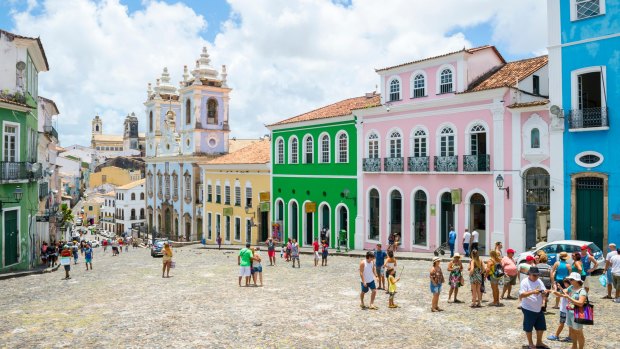
Credit: Alamy
By Ute Junker
If there is an afterlife, there is no way I'm spending it in a garden. Nature is all well and good, but the classic idea of a leafy, verdant paradise just doesn't work for me – and not just because I'm useless with secateurs. I would rather spend my afterlife somewhere interesting. I would want to be in a city, a place filled with people and energy, where I can enjoy fabulous food and a vigorous cultural scene. A city where – depending on your mood – you can both kick on and kick back. In short, I want to spend it in the Brazilian city of Salvador de Bahia.
For a paradisical place, Salvador has a fairly hellish past. For centuries, this former Brazilian capital was one of South America's chief slaving ports, the place where the ships from Africa would unload their suffering human cargo. The city's colonial heart, a neighbourhood of pretty pastel-painted houses, is even named Pelourinho, in memory of the whipping post that once stood in its central plaza.
So why on earth would I pick this city – which, like many South American cities, continues to have issues with poverty and crime – as my everlasting home? Because Salvador is a city with plenty of upsides. It has a balmy climate and gorgeous colonial architecture, not to mention the best food in Brazil. (I could eat moqueca, the more-ish seafood stew, every day of my life). What really sets it apart, however, is its people.
Salvador is known as Brazil's party capital and, unlike Rio and Sao Paulo, the celebrations aren't confined to hip nightclubs. Music flows through the streets of the city, which is also where the best parties take place. Don't waste your time worrying about what to wear; Salvador is not that kind of place. Just turn up and join in.
What I really love about Salvadorans, however, is their attitude to life. They are generous, carefree and friendly, and they don't sweat the small stuff. Even the spirits that they worship as part of the local Candomble faith, based on West African religions, have a zest for life. Look at the offerings laid out at crossroads: they include cigars and bottles of cachaça, the local sugar cane spirit. In Salvador, even eternal beings enjoy a party.
Yes, Salvador is the city I can imagine myself drifting through for eternity. And you know what else? When it all gets too much and you need some time out, you can head to one of the sandy golden beaches that fringe the town. Now that's paradise.
MAKE IT HAPPEN
WHEN This tropical destination enjoys balmy weather all year round, but the best weather is generally between December and March.
FLY LATAM flies from Sydney to Salvador via Santiago and Sao Paulo. See latam.com
DO The beautifully-preserved streets of the Pelourinho district are made for wandering, and its magnificent churches are worth exploring; start with Sao Francisco, with its gold-encrusted interiors and magnificently-tiled cloisters. Other must-dos include watching the sun set at the lovely art deco Elevador Lacerda, savouring traditional Bahian cuisine at the superb Paraiso Tropical restaurant, and signing up for a percussion class or a capoeira session. If you prefer to stay in the audience, catch one of the Saturday evening jazz jam sessions at the Museu de Modern Art of Bahia.
STAY Housed in a newly renovated art deco landmark, the Fera Palace Hotel boasts sophisticated interiors and a glorious rooftop deck, complete with an infinity pool. ferapalacehotel.com.br From 295 reals.
ESSENTIALS The Classic Safari Company has customised Salvador itineraries. Phone 1300 130 218, classicsafaricompany.com.au. See visitbrasil.com
LORD HOWE ISLAND
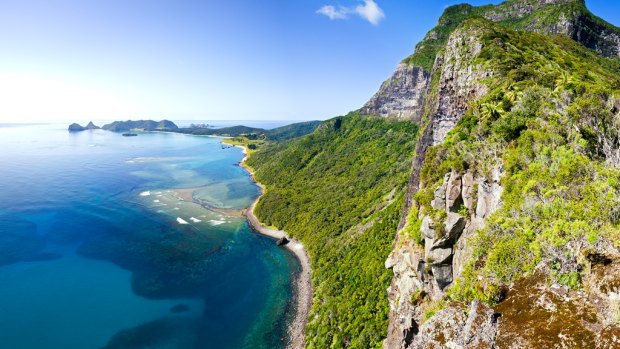
By Michael Gebicki
One of Australia's quiet surprises, Lord Howe Island barely registers with the wider world, and there are plenty who prefer it that way. Anchored 550 kilometres due east of Port Macquarie, the island measures barely 11 kilometres from end to end and two across at its widest point, yet rarely is so much crammed into such a tiny pimple of dry land. The lagoon in the shelter of the reef on the western side of the island hosts the world's most southerly coral gardens. On the eastern side are surf beaches and sheer cliffs that heave themselves vertically from the sea. In the interior are dense forests of the miraculous banyan tree, which can span 100 square metres with its root structure of soaring columns. The summit of Mount Gower is richly invested with rainforest and most of the island's lower storey is blanketed by a rustling canopy of kentia palms, once the mainstay of Lord Howe's economy.
The sea life is phenomenal. In the surrounding waters, warm and cool currents collide, spawning a wealth of marine life that includes giant clams, sea turtles, clownfish, lionfish, tuna, butterfly fish and the doubleheader wrasse, a species unique to the island's waters. The island is also a biological ark, a perch for exotic species of sea birds in migratory journeys that might take them as far north as Siberia. Boobies nest along the windy cliffs, white terns drift like snowflakes among the kentia palm forests and ternlets nest along the base of the cliffs. Lord Howe is the only place on earth where providence petrels breed. One of the greatest concentrations of the fabulous red-tailed tropic bird can be found along the island's northern cliffs.
So much natural bounty is mightily invigorating. Everyone swims, snorkels, hikes, fishes, bicycles, takes up bird watching or even golf for the sheer pleasure of whacking a ball around the lovely nine-hole course. The first thing to do is head over to the Wilson's shop and hire a bike. Next, check out the tours on the board opposite the post office. Guided tours often book out several days in advance and you need to hustle to sign up for fishing, diving, sightseeing, hiking and snorkelling tours.
As well as its birds, its fish, its walks, its quirky island ways, Lord Howe Island is a potent personality-altering substance. Wherever you go you'll come across visitors sighing over some particularly heartening piece of real estate. We are all improved by exposure to Lord Howe Island – better, kinder, healthier, happier. This is the way the world should be. Paradise, with brass knobs on.
MAKE IT HAPPEN
WHEN October to April
FLY Qantaslink flights from Sydney and Brisbane See qantas.com
DO Hiking, biking, birdwatching, fishing, snorkelling and diving
STAY Capella Lodge baillielodges.com.au and Arajilla Retreat arajilla.com.au are the two luxury options while Pinetrees Lodge pinetrees.com.au is the largest of the island's hotels, with several room types up to family-size cottages.
ESSENTIALS Accommodation prices are higher than in mainland Australia, and meals can be expensive, but self-catering apartments are a money-saver. See lordhoweisland.info
Sign up for the Traveller Deals newsletter
Get exclusive travel deals delivered straight to your inbox. Sign up now.